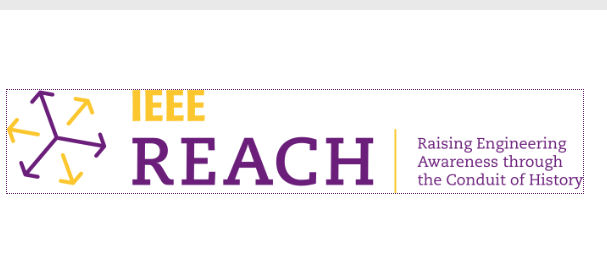
Dear colleagues, the February 2024, IEEE Series / TAB meeting gave me the opportunity to learn about an IEEE program that I was previously unaware of. It is called IEEE REACH, which is a short for Raising Engineering Awareness through the Conduit of History.
I met Ms. Kelly McKenna (REACH Sr. Program Manager) and was pleasantly surprised to see firsthand a demonstration and learn the many possibilities that it offers. It is advertised as an online educational set of resources for teachers, but if among you are individuals that want to promote careers for example on STEM or plain engineering it is a formidable ally.
It was also clear to me, the implicit connection between this program and SSIT. The IEEE REACH is an IEEE History Center Program that brings together the impact that engineering and technology has on humanity.
If you go to their website: https://reach.ieee.org you will find 4 columns. The one to the left is labelled INQUIRY UNITS. Each one has a description and can be downloaded. Currently there are ten units. These are:
- Information Theory
- Electronic Music
- Skyscrapers
- Electric Lighting
- Refrigerated Rail Car
- UAV (Drones)
- Radio
- Triremes
- Early Maritime Navigation
- The Printing Press
Each of the units contains Inquiry Unit Sources such as background information and supporting questions. At the bottom of each unit there are 3 columns: Multimedia (amazing videos, Primary Sources and Hands-on Activities.
At the end of the units there are 9 areas where you can explore the relationship between engineering history and technology and the complex relationships they have with society, politics, economics and culture. These are:
- Agriculture
- Communication
- Energy
- Information Processing
- Manufacturing
- Materials & Structures
- Medicine and Health
- Transportation
- Warfare
This is an IEEE Foundation Donor Supported Program in conjunction with the IEEE History Center.
Luis Kun -February 2024






 JOIN SSIT
JOIN SSIT